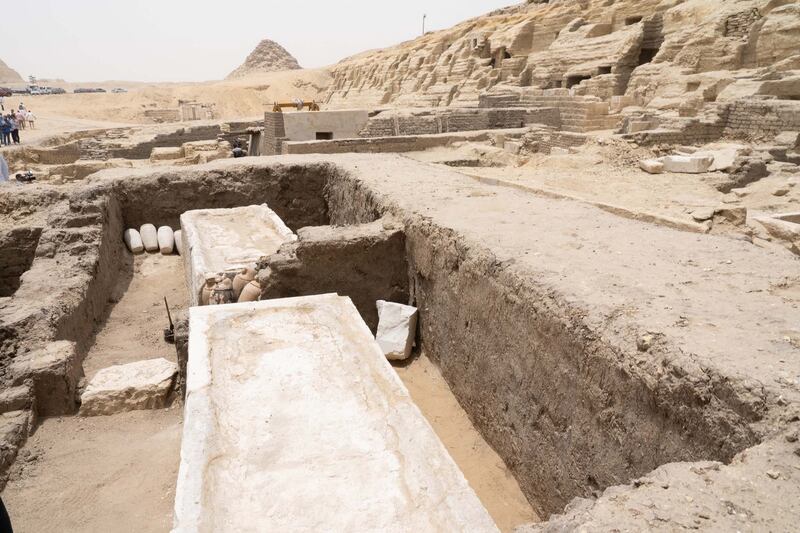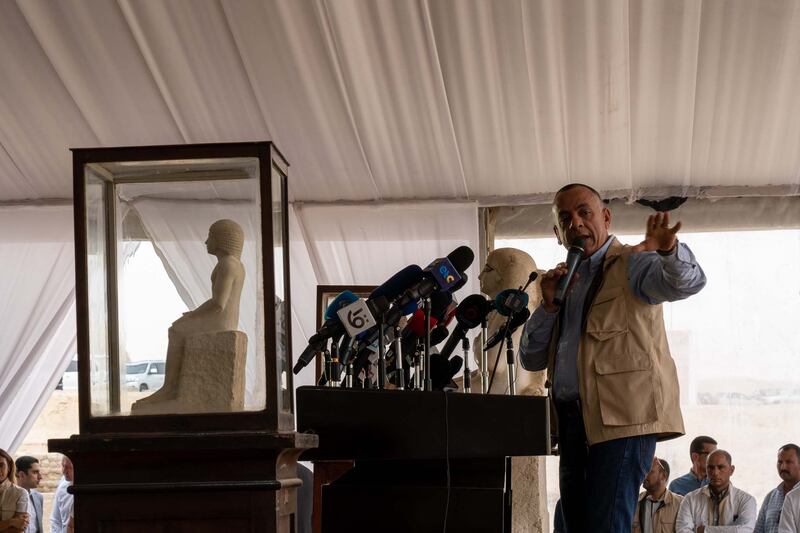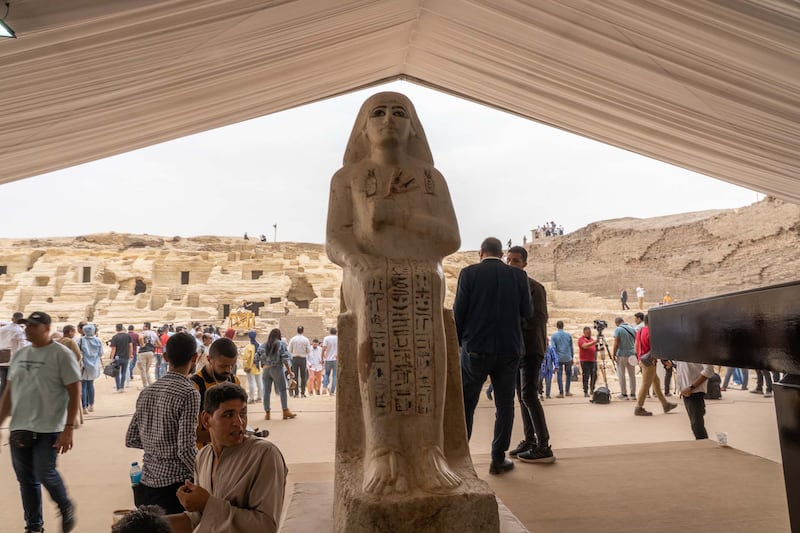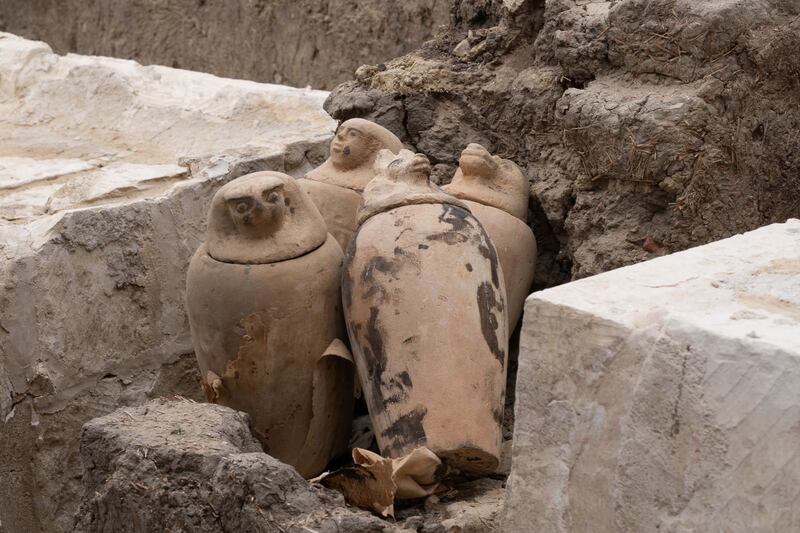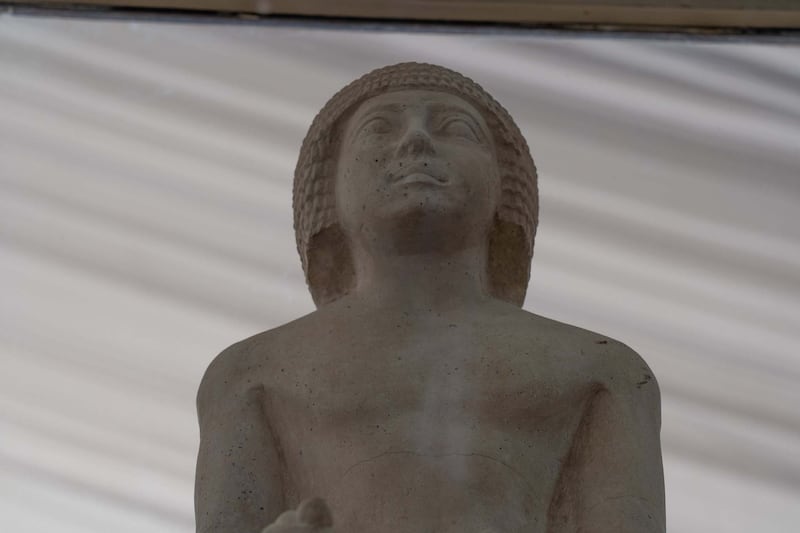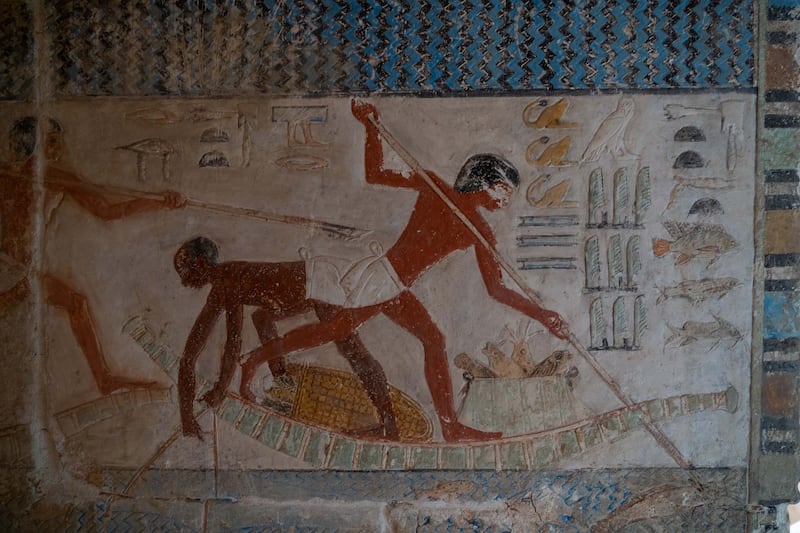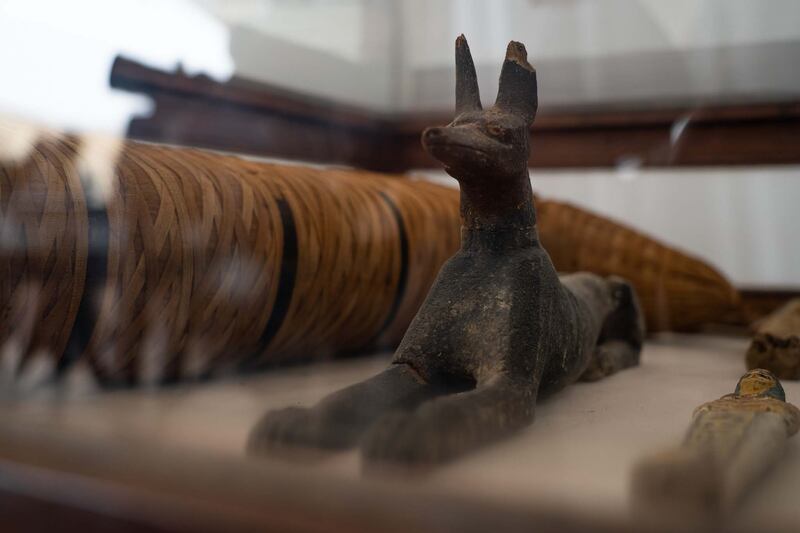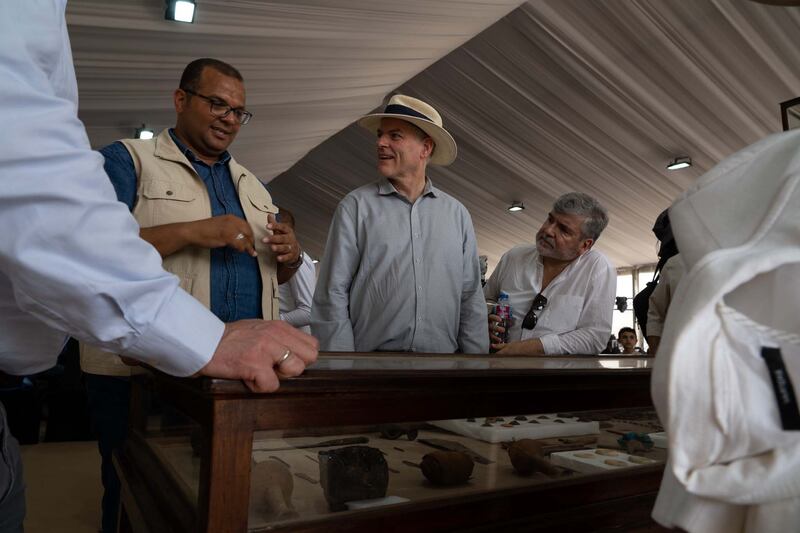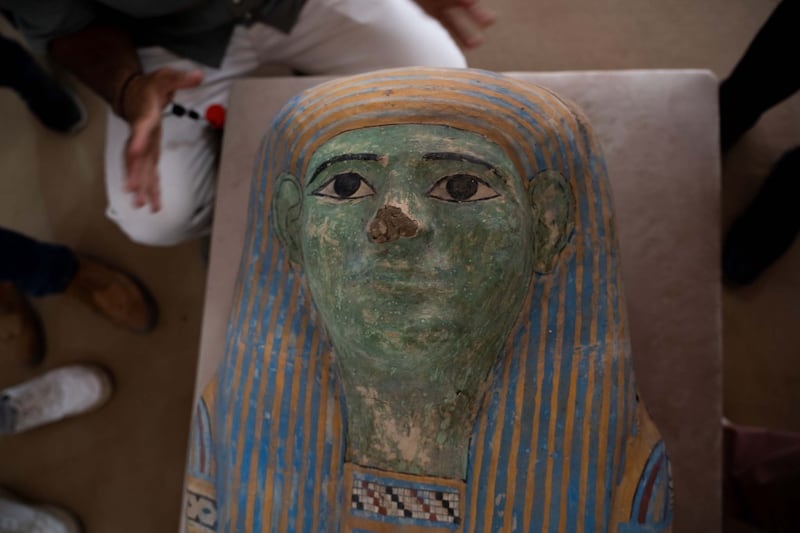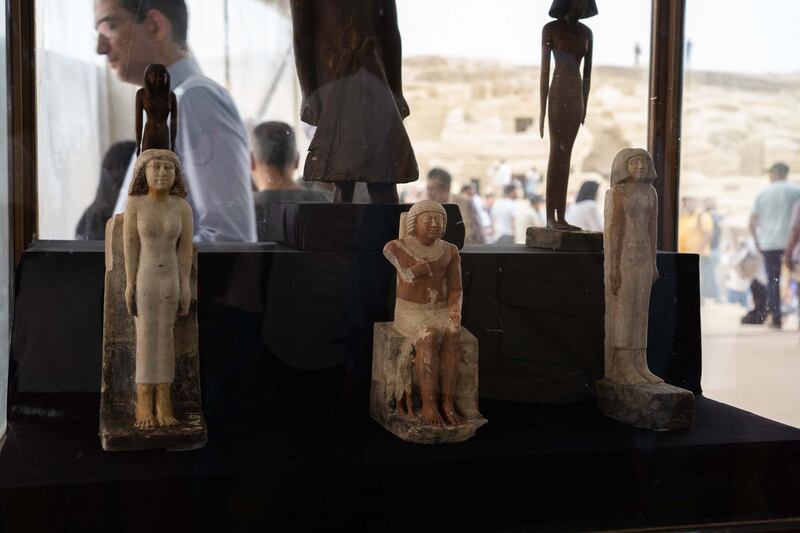Egyptian officials on Saturday revealed the discovery of two embalming workshops, one for humans and the other for animals, at the Saqqara necropolis south-east of Cairo.
Along with two small tombs, a sarcophagus, statues and funerary amulets, they are the latest in a series of finds by an Egyptian archaeological mission working at the site since 2018.
Mostafa Waziri, secretary general of Egypt's Supreme Council of Antiquities, said one of the workshops was used to mummify humans and the other was used for animals.
Embalming rooms for humans and animals among latest finds at Egypt's Saqqara necropolis
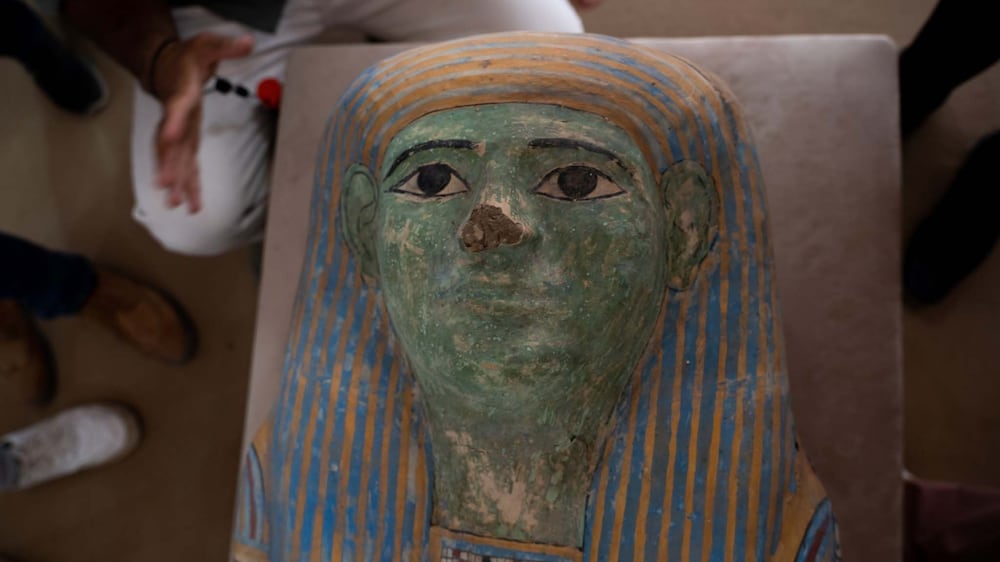
Mr Waziri, who attended the unveiling of the finds along with Tourism Minister Ahmed Eissa, conducted a tour of the workshops, which were found buried beneath a hill.
The remains of the rectangular workshops showed clear divisions into separate rooms, presumably used for the different stages of the mummification process.
Stone beds used to lay out corpses and bathe them in embalming fluids were discovered at the site along with a number of tools used in mummification. Each bed is two metres long and 50 centimetres wide.
Nitrate salt, black resin, wooden stirring sticks and rolls of linen, all used in the embalming process, were found at both workshops.
One of the newly discovered tombs belonged to a 5th dynasty (2465-2323 BC) dignitary named Ne Hesut Ba. An alabaster statue of him was found hidden inside a niche within his tomb.
According to inscriptions found in the tomb, he was head of scribes and a priest of the god Horus. A detailed record printed on the front of his statues revealed that he was also charged with digging canals and waterways for the state.
The second tomb belonged to a priest named Men Kheber, whose remains date to the more recent 18th Dynasty (1400BC).
Both tombs were decorated with colourful scenes of daily life.
Led by Mr Waziri, the Egyptian archaeological mission's first major discovery after starting work at Saqqara in 2018 was the tomb of the high priest Wahtye, dating back about 4,500 years to the Old Kingdom of ancient Egypt. A few months later, the mission also discovered a haul of animal mummies.
In October 2020, the team found a cache of 59 sarcophagi and mummies at Saqqara. Two similar finds followed, one comprising 157 sarcophagi with their mummies inside and the other, in May last year, of 250 sarcophagi and mummies.
“When we found so many mummies and sarcophagi in one place, we knew it was only a matter of time until we found the embalming workshops. Today we are unveiling them,” Mr Waziri said.
All the mission’s discoveries are currently on display at the Egyptian Museum in Tahrir, the National Museum of Egyptian Civilisation and the yet-to-be-inaugurated Grand Egyptian Museum.
“An important aspect of our mission’s work was to exhibit our discoveries at museums and not to leave them in storage rooms,” Mr Waziri said.
Excavations on the western side of the site are expected to continue soon.
The Saqqara necropolis was established just outside the ancient Egyptian administrative city of Memphis during the Early Dynastic period (circa 2900-2649 BC) and remained in use for more than 3,000 years.
A number of prominent Old Kingdom artefacts were unearthed at the site, which is also home to the oldest pyramid in Egypt, the Step Pyramid of Djoser.
